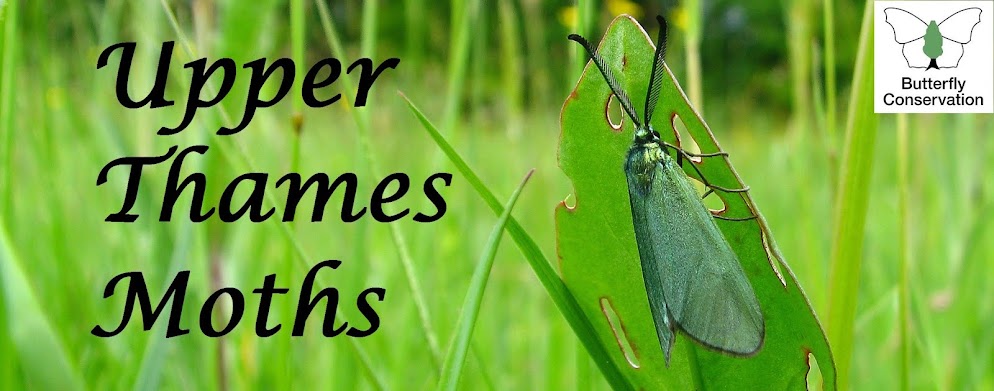Trapped on two nights, 8 days apart, this month. The counts were large: 151 moths and 50 species at the start of the month and 248 (net of escapees, especially Yellow Underwings, and thankfully, some micromoths) and 61 species. Dominant were Common Rustic, Dark Arches, Common Footman, and Garden Grass Veneer. The species count year to date is now 119, including micros and I have only just realised that Oxfordshire has separate recorders for macro and micro moths so I will have to disentangle them on my spreadsheet. My wife asked if any were uncommon, but in truth I have no idea. Is there a 'rare moth list' for the county or indeed just a list of moths seen in Oxfordshire?






Hello Terry, when Butterfly Conservation's forthcoming Atlas is published in a couple of years, you'll have a much better idea of what is expected locally and what is rare so far as macro-moths are concerned, but I appreciate that's not a great deal of help to you right now! The latest (third) edition of the Waring, Townsend & Lewington Field Guide does have small distribution maps which, when interpreted alongside the text, will give you a good idea of what is common, what is rare and what simply isn't found at all in our area. For micro-moths you might find of use a document which Martin Harvey produced recently for Berkshire. I appreciate that you're in north Oxfordshire but remember that we record moths by vice-counties and the Berkshire vice-county uses the old county boundary (the Thames) which goes as far north as Oxford itself, so not as far away as you might think. Go to:
ReplyDeletehttps://sites.google.com/site/berksmoths/Home/resource_list
then click on the top document ("Micro-moth verification guidelines for print"). Martin has included the number of records for each species which will give you a clue as to how common or rare each one may be.
Oned of the more uncommon ones is Dark-barred Twin-spot Carpet (and requires dissection these days) and I think yours is a Red Twin-spot Carpet and is far more abundant in this area.
ReplyDeleteThanks for the correction.
DeleteI have found the book "The Larger Moths of Warwickshire" by David C.G. Brown really useful to give some indication of the status of macro moths in this area. It was published in 2006 but is well worth a look. If you would like to e-mail me at ajnewbold88@gmail.com I would be very happy to send you my species lists for Sibford with the numbers of individuals caught. I have been trapping fairly frequently for a couple of years now and I'm probably starting to get a reasonable list of what is around. I am only about 4 miles from Hook Norton.
ReplyDeleteI will send you my list for 2016 and 2017 year to date
Delete